Since 2012, Mike Eckhaus and Zoe Latta of experimental label Eckhaus Latta have collaborated with German director Alexa Karolinski on nine fashion film projects. Their first, “Uniform,” profiled a group of senior citizens who for the past 30 years have gathered each day in Chinatown’s Columbus Park to practice luk tung kuen, an elegant form of exercise not unlike tai chi. The short film documents the group’s enthralling morning routine, and its members’ feelings on the importance of ritual, community, and as the film’s title suggests, fashion. Four years later — in the midst of a full-fledged New York heat-wave — the design duo presented an outstanding spring/summer 17 collection guided by similar principles. Debuted in Hester Street Park — a Chinatown square that sits across the street from the designers’ Lower East Side studio — the collection featured fresh yet refined takes on everyday staples. For Eckhaus and Latta, it felt like a homecoming.
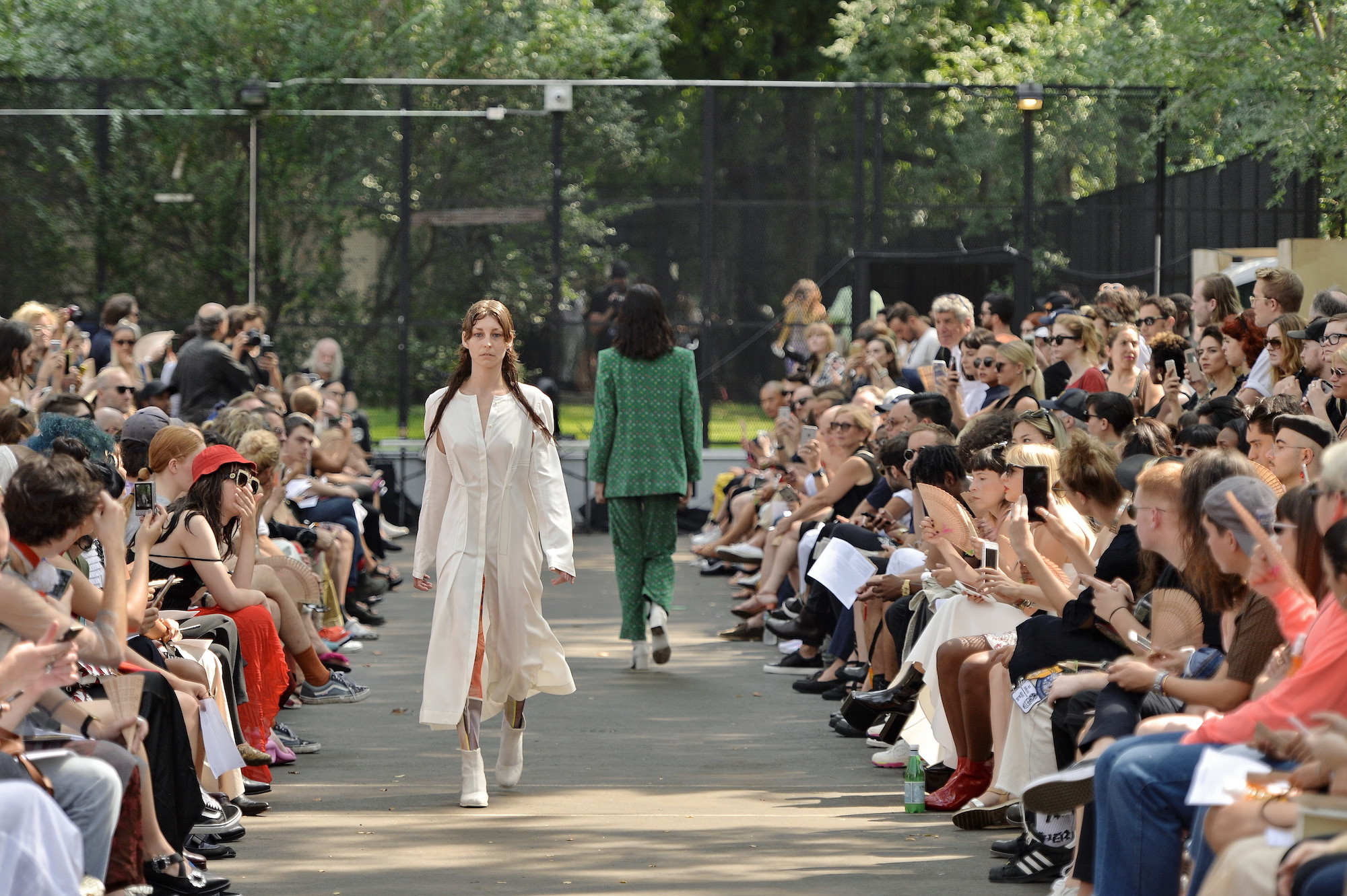
“Last season was shown at night and in a really specific architectural environment; it was really other-worldly,” Zoe said of February’s presentation, staged inside a geodesic inflatable dome in MoMA PS1’s concrete courtyard. This time, “we wanted it to exist in the world we live in, really ground it in reality,” said Mike, under a towering oak tree. “We’ve lived around here, we’ve had studios around here — it’s just nice to be in the neighborhood.”
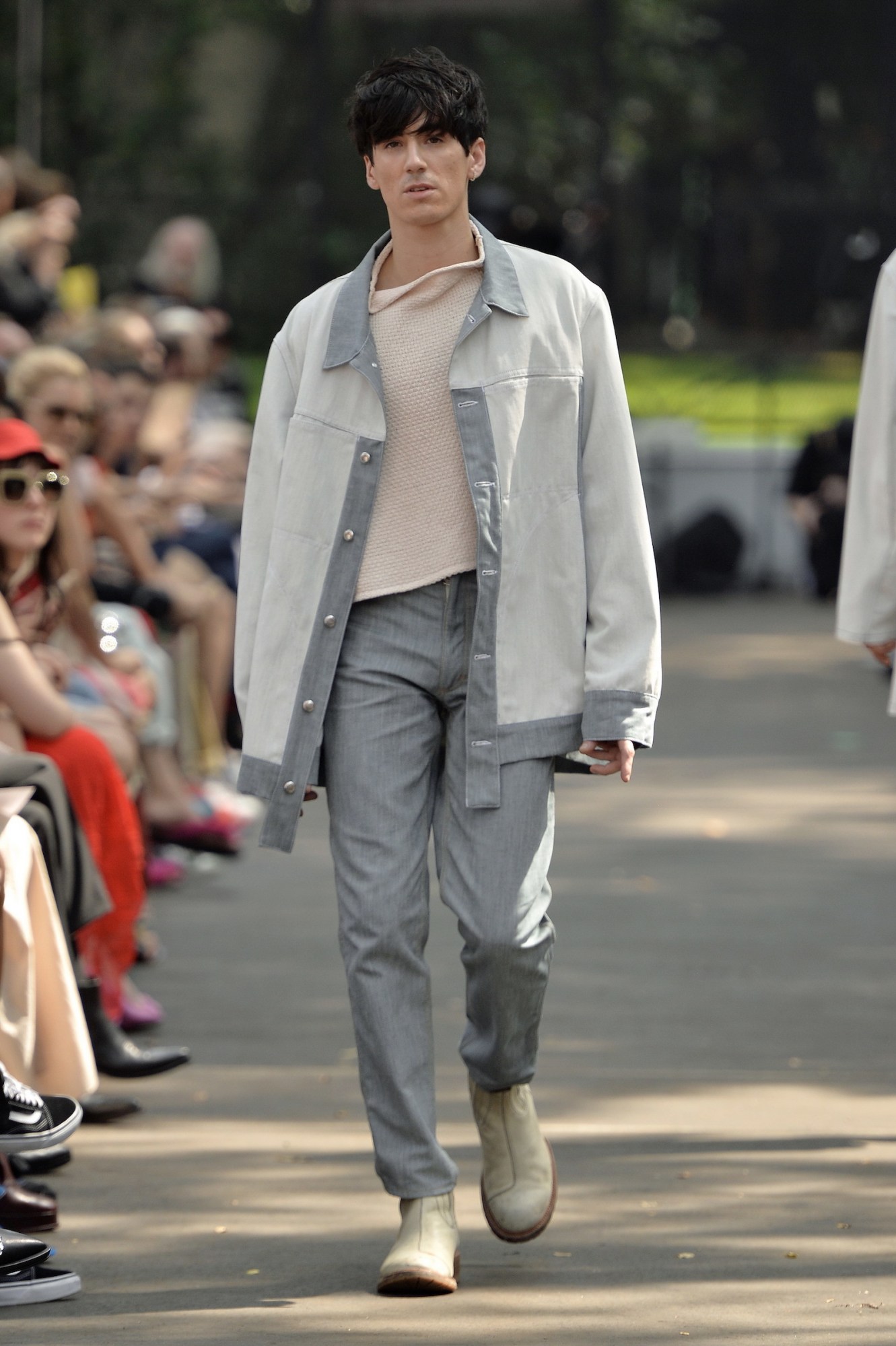
Past Eckhaus Latta collections have placed an emphasis on movement, a sensibility shaped by the designers’ backgrounds in sculpture and textile design. This season — one of the duo’s most pared-down to date — the Rhode Island School of Design grads reimagined an offering of wardrobe standbys (think oversized denim jackets, boxy workwear trousers, and those enviable slouchy knits) through their own distinctive lens. Hester Street Park proved a perfect venue, as the movement communicated in these garments is a less-overt, familiar kind — like slipping through side streets in your own neighborhood. “I think we’re working in a way of pulling out some of the fuss at times, and wanting the clothes to feel like something you can just throw on and go about your day,” said Mike. “It’s nice to explore that realm, because I think progressively, we’ve just become more excited about clothes being clothes.”

The show featured a beautiful collaboration with an LES neighbor: Devonté Hynes. The Blood Orange frontman is never too far outside of Eckhaus and Latta’s world: some seasons he models, some film projects he soundtracks, sometimes he’s just an audience member. This season, Hynes provided an excellent live score — a blend of electronic hums and evocative cello loops, which felt a bit akin to “Delancey,” a swirling pop-scape named after a street just four blocks north of Hester.
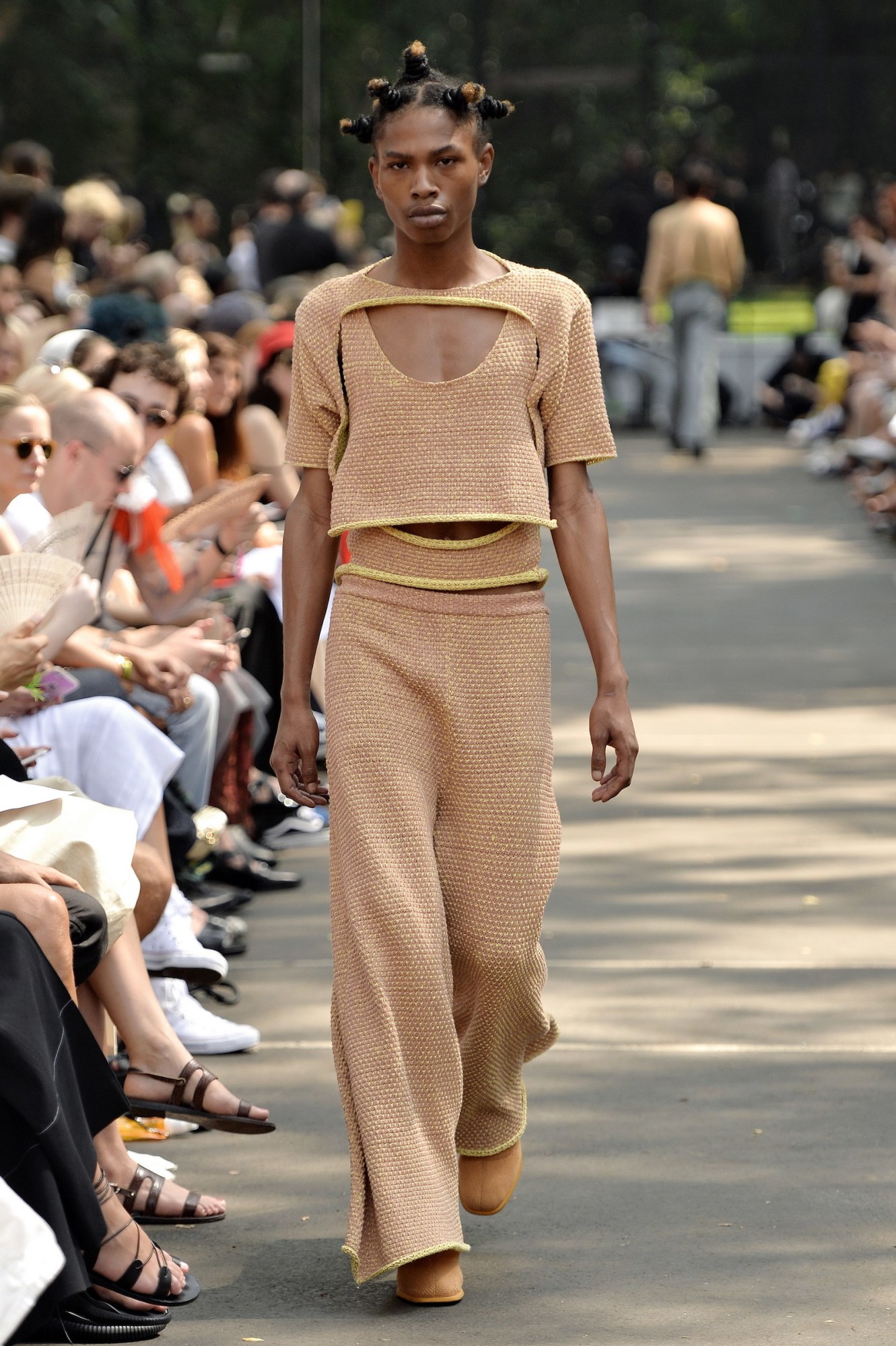
“I think Dev has a beautiful sensitivity to looser concepts and how to work with an environment. We trust him and enjoy working with him so much because he can really understand, synthesize, and generate a soundtrack for the collection that feels so in tune with everything and picks up on the environment,” Mike explained. “It’s not like we’re trying to do a stomping runway thing. There’s sounds of people playing tennis and basketball next to us — we wanted that atmosphere.”
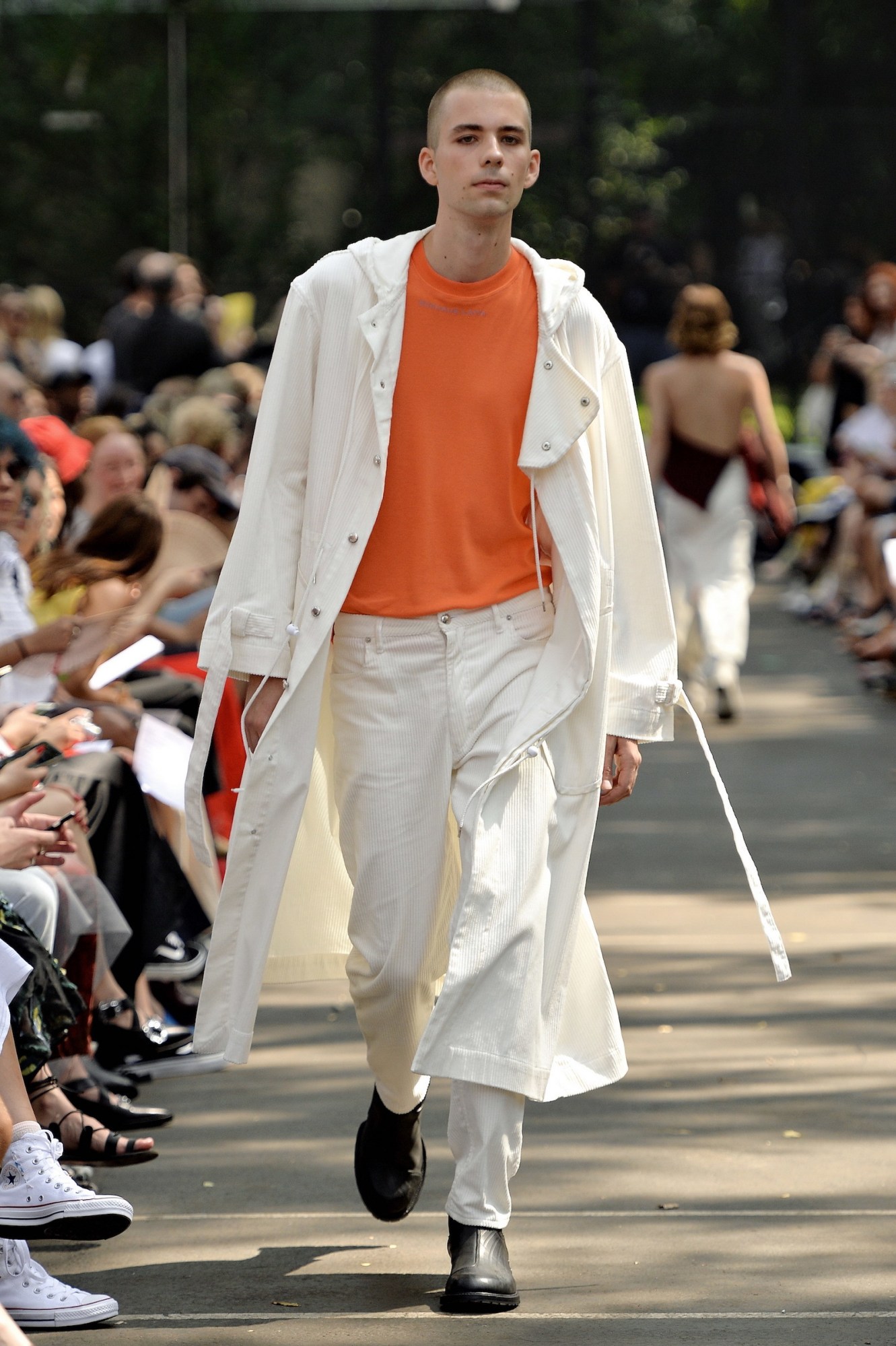
Hynes’ score left room for these natural noises — cicada songs, skaters shredding at Seward Park next door — but included another distinctly New York sound, too: a pastiche of samples similar to those found on his most recent record, Freetown Sound. It’s inspired by The Beastie Boys’ experimental triumph Paul’s Boutique, and at times sounds like a boombox mixtape is stuttering. It’s also a record Zoe says she and Mike “have on loop in both of our studios.” When the designers approached Hynes to collaborate, his “yes” was immediate, but, “it was kind of, ‘whether you like it or not, you’re part of the collection — we’ve been listening to your album non-stop,'” said Zoe.
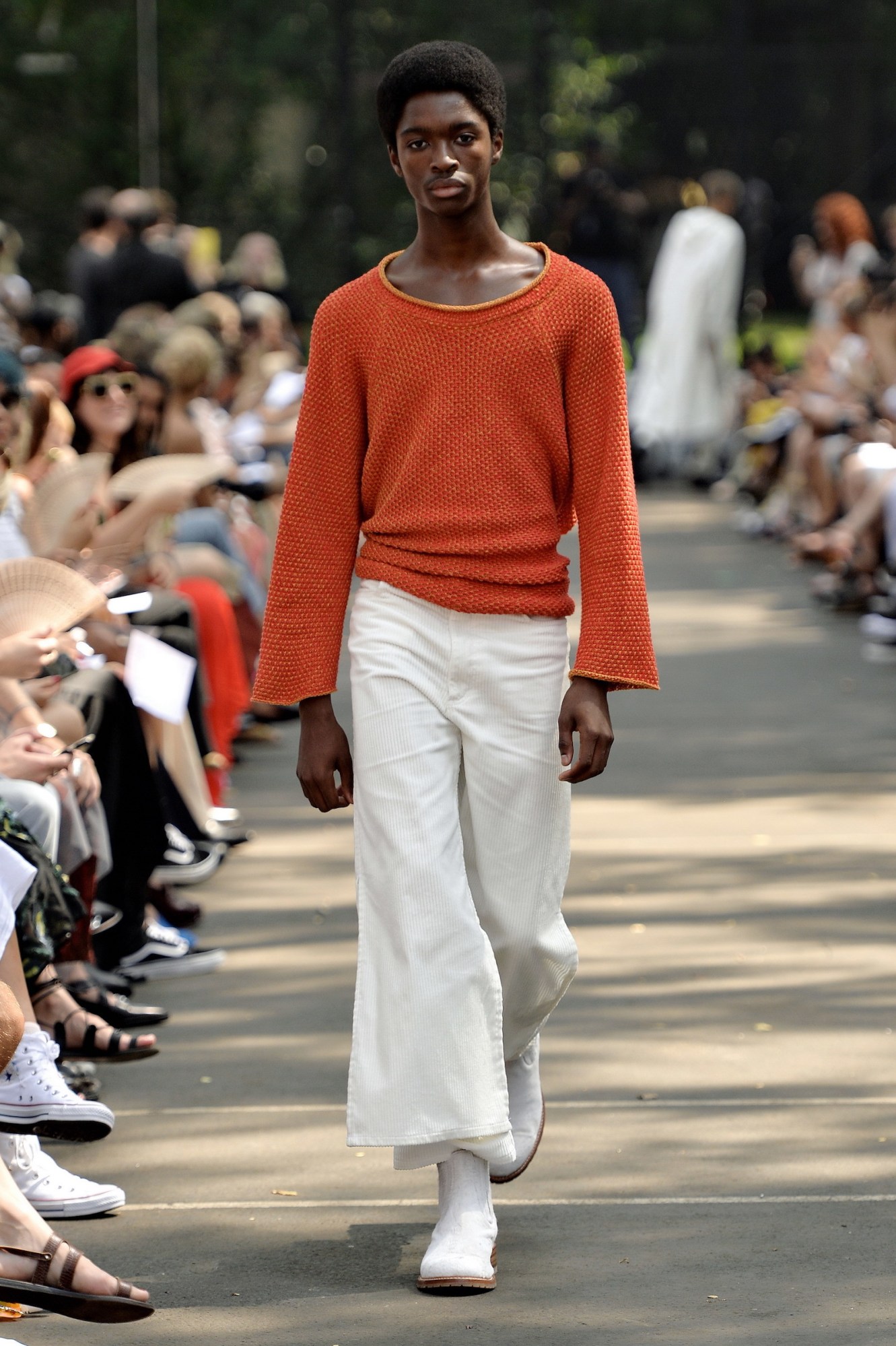
It’s a two-way street: Eckhaus and Latta have influenced Dev’s creative evolution, too. Hynes also provided an original live score for Eckhaus Latta’s fall/winter 15 show, a piano piece that included the repeated line, “feeling the comfort of sadness in a new set of surroundings.” That lyric should be recognizable to Freetown Sound listeners, as it’s since evolved into the hook of “E.V.P,” a richly textured patchwork of 80s synths and punched-up drum parts. “If the rest of Freetown Sound explores New York’s alleyways, clubs, and parks, album centerpiece ‘E.V.P’ looks out from the observation deck of the Empire State Building,” Pitchfork wrote in its Best New Track review.
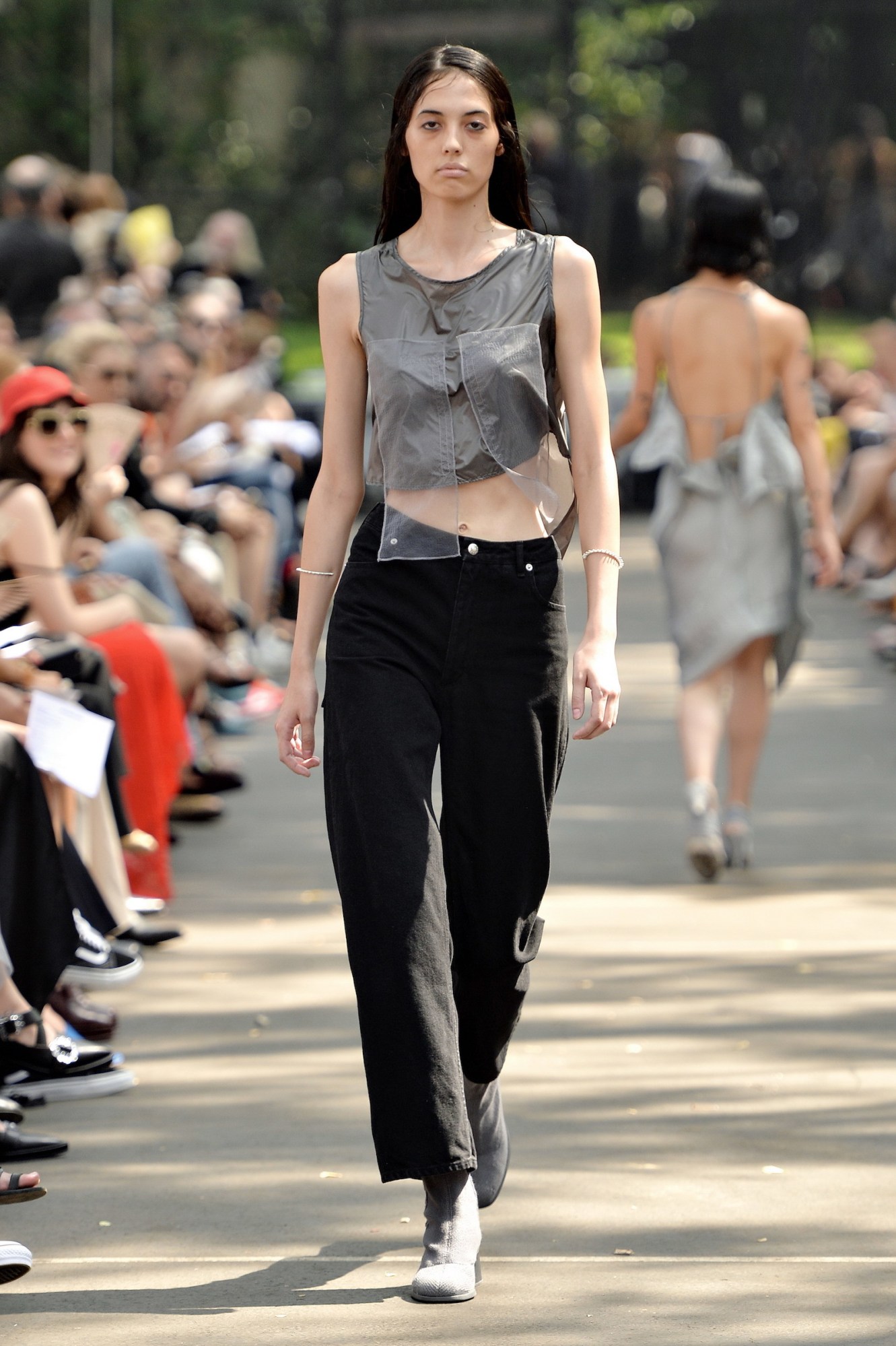
Today, though, Hynes, Eckhaus, and Latta were content to look out into Chinatown — where they, like the luk tung kuen crew, gathered to celebrate ritual, every day clothing, and creative community.
Credits
Text Emily Manning
